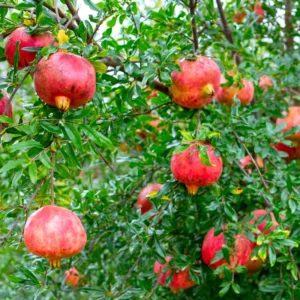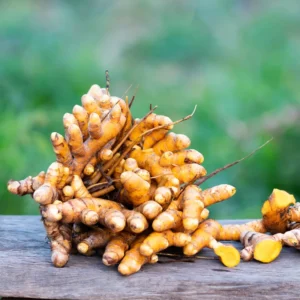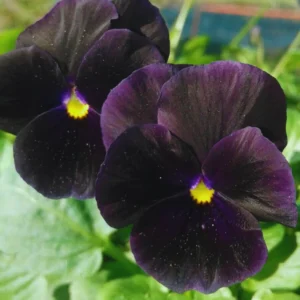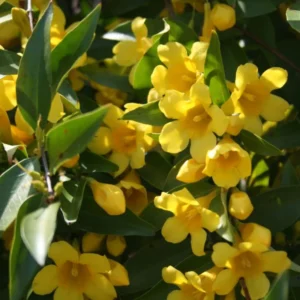-
×
 Wonderful Pomegranate Tree Live Plant 10-12 Inch Fruit Bush Indoor/Outdoor
1 × $32.99
Wonderful Pomegranate Tree Live Plant 10-12 Inch Fruit Bush Indoor/Outdoor
1 × $32.99 -
×
 Turmeric Plants Live for Planting - Curcuma Root - 4-6 Inch Herb Plants
1 × $29.99
Turmeric Plants Live for Planting - Curcuma Root - 4-6 Inch Herb Plants
1 × $29.99 -
×
 Black Pansy Live Plant - 2 Pack Flowering Viola, 3-6 Inches, Garden Ready
1 × $28.99
Black Pansy Live Plant - 2 Pack Flowering Viola, 3-6 Inches, Garden Ready
1 × $28.99 -
×
 Jasmine Plants Live Set of 3 Yellow Jasmine Starter Plants 5-7 Inches Indoor/Outdoor
1 × $39.49
Jasmine Plants Live Set of 3 Yellow Jasmine Starter Plants 5-7 Inches Indoor/Outdoor
1 × $39.49
Have you ever dreamt of having a garden that not only looks beautiful but also fills the air with an irresistible fragrance? If so, jasmine might just be the perfect addition to your outdoor space. Jasmine flowers are known for their stunning blooms and sweet, aromatic scent that can instantly elevate any garden. Whether you’re a seasoned gardener or just starting out, choosing the right jasmine variety can transform your garden into a fragrant paradise.
But with so many different varieties of jasmine available, how do you know which one to choose? In this article, we’ll explore five popular jasmine varieties that are sure to bring your garden to life with their captivating fragrance. We’ll also discuss how to grow and care for these plants so you can enjoy their beauty for years to come.
Table of Contents
What is Jasmine and Why is it Popular for Gardens?
Jasmine (Jasminum) is a genus of flowering plants famous for their sweet-scented blooms. Native to both tropical and subtropical regions, jasmine has been a garden staple for centuries. Its captivating fragrance, delicate flowers, and easy-to-grow nature make it an excellent choice for any garden, big or small.
Jasmine flowers come in various colors, sizes, and forms—perfect for nearly any garden design. Whether you want a trailing vine, a fragrant hedge, or a fragrant ground cover, jasmine has something for every garden style. Not only is jasmine admired for its beauty, but it also attracts pollinators like bees and butterflies, helping to support local ecosystems.
5 Jasmine Varieties That Will Elevate Your Garden’s Fragrance
If you’re looking to fill your garden with fragrance, these five jasmine varieties are sure to make your outdoor space bloom with delightful scents. Let’s take a closer look at each one!
1. Jasmine Sambac (Arabian Jasmine)

Jasmine Sambac, also known as Arabian Jasmine, is one of the most fragrant varieties you’ll encounter. This perennial shrub produces beautiful, white, star-shaped flowers that are known for their intoxicating, sweet fragrance. Jasmine Sambac is highly prized in the perfume industry due to its intense scent and is often used in the production of jasmine tea. If you’re after a jasmine variety with a constant floral presence, this one won’t disappoint!
“This variety is perfect for gardeners who want to enjoy jasmine all year round,” says Maria Johnson, a gardener and plant expert from the University of Horticulture. Jasmine Sambac thrives in warm climates and is highly adaptable, making it an ideal choice for both novice and experienced gardeners.
Zones: 8 to 11
Mature Size: 3 to 6 feet tall x 3 to 6 feet wide
Care Requirements: Full sun to partial shade; well-drained, fertile soil; moderate watering
Read more: The Ultimate Guide to Arabian Jasmine Care and Growing Tips
2. Jasmine Grandiflorum (Spanish Jasmine)

Jasmine Grandiflorum, or Spanish Jasmine, is a classic and timeless variety with large, white flowers that release a strong, sweet fragrance. This variety is often found climbing on trellises or fences, making it perfect for those looking to create a vertical garden. “The scent of Spanish Jasmine can fill your garden, making it an ideal choice for evening gardens,” explains Anna Carter, a landscape designer.
Spanish Jasmine is particularly well-known for its use in the production of jasmine tea, which adds a floral, delicate aroma to the beverage. When grown in the right conditions, it produces beautiful blooms from summer through fall, ensuring your garden stays fragrant for months.
Zones: 7 to 10
Mature Size: 6 to 10 feet tall x 4 to 6 feet wide
Care Requirements: Full sun for the best blooms; moderate watering; prefers well-drained, slightly acidic soil
3. Jasmine Officinale (Common Jasmine)

Common Jasmine, or Jasminum officinale, is one of the most beloved jasmine varieties in gardens around the world. Known for its small, delicate white flowers, this variety packs a big punch when it comes to fragrance. Its flowers have a sweet, rich scent that fills the air, especially in the evening.
“It’s the perfect plant for creating a natural, fragrant screen or climbing vine,” says Michael Stevens, a landscape architect. Common Jasmine grows vigorously and can be trained to climb fences, walls, or trellises, providing both beauty and fragrance. Plus, it’s relatively low-maintenance, making it an excellent choice for gardeners looking for an easy-to-care-for plant.
Zones: 7 to 10
Mature Size: 10 to 15 feet tall x 4 to 6 feet wide
Care Requirements: Full sun to partial shade; well-drained soil; moderate watering
4. Jasmine Nudiflorum (Winter Jasmine)

Winter Jasmine is a wonderful variety that offers something a bit different from traditional jasmine varieties. Unlike most jasmine plants, Jasminum nudiflorum blooms in late winter or early spring, providing a burst of color and fragrance during the colder months when most gardens are dormant. Its vibrant yellow flowers create a striking contrast against a backdrop of bare branches, making it a great choice for winter interest in your garden.
“This variety is perfect for gardeners in cooler climates who want to enjoy some early-season color and fragrance,” says Jane Miller, a plant expert with a focus on hardy perennials. Winter Jasmine’s hardiness and early blooming period make it a standout addition to any garden.
Zones: 6 to 9
Mature Size: 3 to 6 feet tall x 5 to 8 feet wide
Care Requirements: Full sun to partial shade; well-drained soil; drought-tolerant once established
5. Night-Blooming Jasmine (Cestrum nocturnum)

Night-Blooming Jasmine, or Cestrum nocturnum, is a highly fragrant plant known for its strong, sweet scent that intensifies in the evening. Unlike other jasmine varieties that bloom during the day, Night-Blooming Jasmine comes to life at night, releasing its powerful fragrance as the sun sets. Its small, tubular flowers are typically greenish-white, and they appear in clusters, attracting nighttime pollinators such as moths.
This variety is perfect for gardens where you want to enjoy a fragrance-rich atmosphere in the evening. “Night-Blooming Jasmine is ideal for garden spaces close to patios or seating areas where you can enjoy its scent in the cool evening air,” suggests Rachel Adams, a garden designer.
Zones: 8 to 11
Mature Size: 4 to 6 feet tall x 3 to 5 feet wide
Care Requirements: Full sun to partial shade; prefers well-drained soil; water regularly but avoid waterlogging
How to Grow Jasmine in Your Garden
Growing jasmine in your garden is easier than you might think. Here’s what you need to know to get your jasmine plants thriving:
Soil and Watering Needs
Jasmine plants prefer well-drained, fertile soil that is rich in organic matter. Make sure the soil doesn’t become waterlogged, as jasmine is susceptible to root rot in overly moist conditions. When planting jasmine, ensure that the soil is consistently moist, but not soggy. A good rule of thumb is to water when the top inch of soil feels dry.
Pruning and Maintenance
To keep your jasmine plants healthy and encourage abundant blooms, regular pruning is essential. After flowering, trim back dead or damaged stems to promote new growth. If you’re growing a jasmine vine, pruning can help control its size and prevent it from becoming too unruly. If you want to learn more about how to properly trim and shape your jasmine for the best results, check out our full guide on Trimming Jasmine: Tips You Need to Know.
Fertilizing
During the growing season, fertilize your jasmine plants with a balanced fertilizer every four to six weeks. This will help encourage strong growth and vibrant flowers. Avoid over-fertilizing, as this can lead to excessive leaf growth without many blooms.
Creating a Fragrant Garden with Jasmine
Now that you’ve chosen the perfect jasmine variety, let’s talk about how to incorporate it into your garden design.
Companion Plants for Jasmine
Pair jasmine with other fragrant plants like lavender, roses, or honeysuckle to create a sensory experience that will enchant your visitors. The contrast in scents can heighten the overall atmosphere of your garden, making it a relaxing retreat.
Designing a Jasmine-Inspired Garden
Jasmine is perfect for creating focal points in your garden. Consider planting it near a seating area, a trellis, or along pathways to ensure its fragrance can be enjoyed as you walk through your garden. Planting jasmine near windows or patios is also a great way to enjoy its scent from the comfort of your home.
Conclusion
Adding jasmine to your garden is a surefire way to create a fragrant paradise. With a variety of types to choose from, whether you’re looking for a climbing vine or a fragrant hedge, there’s a jasmine variety that fits every garden. From the sweet aroma of Jasmine Sambac to the bold yellow blooms of Jasmine Nudiflorum, each variety brings its own unique charm and fragrance to your outdoor space.
Frequently Asked Questions (FAQs)
Q1: What is the best jasmine variety for a small garden?
Answer: Jasmine Sambac and Jasmine Grandiflorum are both excellent choices for small spaces, as they can be grown in containers or trained to grow vertically on trellises.
Q2: Can jasmine grow in colder climates?
Answer: Yes! Jasmine Nudiflorum (Winter Jasmine) is a cold-hardy variety that can bloom even in cooler climates, adding color and fragrance to your garden in late winter and early spring.
Q3: How often should I water jasmine?
Answer: Jasmine likes consistently moist soil but doesn’t like to be waterlogged. Water deeply when the top inch of soil feels dry.
Q4: Can I grow jasmine indoors?
Answer: Yes, many jasmine varieties, like Jasmine Sambac, can thrive indoors with proper care, including plenty of sunlight and humidity.
Whether you’re an experienced gardener or just starting, jasmine plants are a beautiful addition to any garden. By choosing the right jasmine variety for your climate and space, and following simple care guidelines, you can enjoy their fragrance and beauty all year round. Happy gardening!
